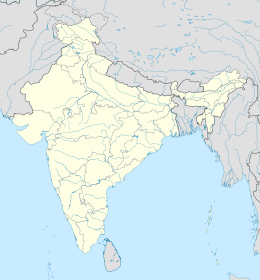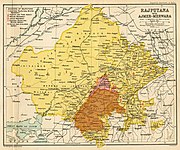
Rana Sangram Singh I, popularly known as Rana Sanga, was the Maharana of Mewar from 1508 to 1528 CE. Belonging to the Sisodia Rajput dynasty, through his capable leadership, he transformed the Kingdom of Mewar into the most powerful state in northern India in the early 16th century. He controlled parts of present-day Rajasthan, Gujarat and Madhya Pradesh with his capital at Chittor. His reign was admired by several of his contemporaries, including the first Mughal Emperor Babur, who described him as the "greatest Indian ruler" of that time. The Mughal historian Abd al-Qadir Badayuni called Sanga the bravest of all Rajputs.In contemporary texts, he is described as the Hindu Emperor (Hindupati) of northern India.
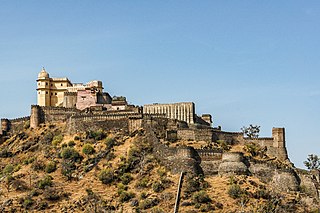
Kumbhalgarh, also known as the Great Wall of India, is a fortress on the westerly range of Aravalli Hills in the Rajsamand district of the Rajasthan state in India.
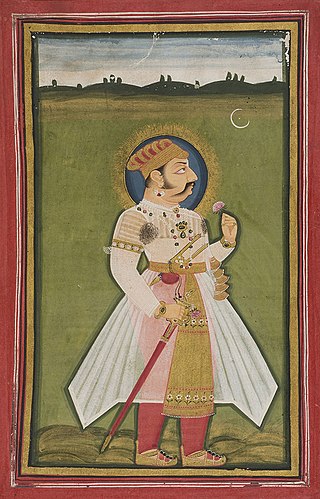
Rana Kumbha or Kumbhkaran Singh (1433–1468), popularly known as Maharana Kumbha, was the ruler of the Kingdom of Mewar. He belonged to the Sisodia clan of Rajputs. It was during his reign that Mewar became one of the most powerful political powers in northern India. He is considered to be the most powerful ruler of his time in India.

The Chittorgarh, also known as Chittod Fort, is one of the largest living forts in India. It is a UNESCO World Heritage Site. The fort was the capital of Mewar and is located in the present-day city of Chittorgarh. It sprawls over a hill 180 m (590.6 ft) in height spread over an area of 280 ha above the plains of the valley drained by the Berach River. The fort covers 65 historic structures, which include four palaces, 19 large temples, 20 large water bodies, 4 memorials and a few victory towers.

The Malwa Sultanate was a late medieval kingdom in the Malwa region, covering the present day Indian states of Madhya Pradesh and south-eastern Rajasthan from 1401 to 1562. It was founded by Dilawar Khan, who following Timur's invasion and the disintegration of the Delhi Sultanate, in 1401, made Malwa an independent realm.
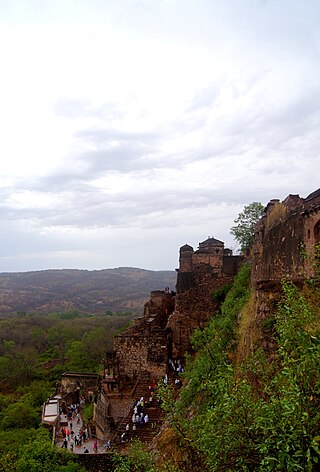
Ranthambore Fort lies within the Ranthambore National Park, near the city of Sawai Madhopur in Sawai Madhopur district of Rajasthan, India. the park being the former hunting grounds of the Maharajahs of Jaipur until the time of India's Independence. It is a formidable fort having been a focal point of the historical developments of Rajasthan. The fort is believed to be constructed by numerous kings from Several Dynasties including The Yadavas, Chahamana Rajputs, Hada Rajputs, Mewar Rajput Kings and then the Delhi Sultanate captured it for a brief time. The fort provides a panoramic view of the surrounding Ranthambore National Park and is now a popular tourist attraction.

The Kingdom of Mewar, also called Medapata, was an independent kingdom that existed in the Rajputana region of the Indian Subcontinent and later became a dominant state in medieval India. The kingdom was initially founded and ruled by the Guhila dynasty followed by the Sisodiya Dynasty. The earliest kingdom was centered around the south-central part of Rajasthan, state of India. It was bordered by the Aravali Range to the northwest, Ajmer to the north, Gujarat, Vagad and Malwa regions to the south and the Hadoti region to the east.
Raimal Singh Sisodia, also known as Rana Raimal, was a Hindu Rajput ruler of Mewar. Maharana Raimal was the son of Rana Kumbha and his Rathore queen, a princess of Idar.
Rana Kshetra Singh (1364-1382), was the Sisodia Rajput ruler of Mewar Kingdom. He was the eldest son of his father and predecessor Rana Hammir Singh the progenitor of Sisodias.In his reign, he conquered the territories of Ajmer and Mandalgarh.
Rana Ratan Singh II was the Maharana of Mewar Kingdom. He was a son of Rana Sanga. He was killed during a war in 1531. He was succeeded by his surviving brother Vikramaditya Singh.

Mahmud Khalji (1436–1469), also known as Mahmud Khilji and Ala-ud-Din Mahmud Shah I, was the Sultan of Malwa, in what is now the state of Madhya Pradesh, India. Khilji came into power after assassinating Mohammad, the son of the previous ruler, Hoshang Shah, in 1435. He mounted an unsuccessful campaign against the Delhi Sultanate however, it was under his reign that the Malwa Sultanate reached its greatest height.

The Battle of Gagron was fought in 1519 between Mahmud Khalji II of Malwa and Rajput Confederacy of Rana Sanga. The conflict took place in Gagron and resulted in Sanga's victory, with him taking Mahmud captive and annexing significant territory.
The Battle of Mandalgarh and Banas were two major battles fought between Rana Kumbha of Mewar and Mahmud Khalji of Malwa which resulted in two indecisive conflicts.
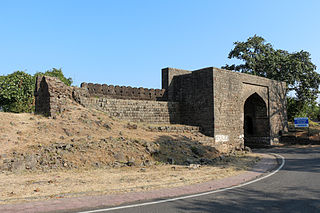
The Battle of Sarangpur was fought between Rana Kumbha and Sultan Mahmud Khilji. Mahpa Panwar, who was one of the assassins of Rana Mokal, was sheltered by the Sultan of Mandu. A demand for this person was made by Rana Kumbha, but Mahmud Khilji refused to surrender the refugee. The Rana prepared for hostilities and advanced to attack Mandu. The Sultan advanced with a powerful army to meet Kumbha.
The Battle of Mandalgarh took place in 1473. Following an earlier unsuccessful attempt by Ghiyath Shah, the Sultan of Malwa, to capture Chittorgarh from the Kingdom of Mewar, Zafir Khan, one of Ghiyath Shah's generals, led a force which raided and plundered Mewar. In response, a combined force of Rajput armies, assembled by the Maharana of Mewar, met Zafir's army at Mandalgarh; here too, the Malwa forces met with a crushing defeat.
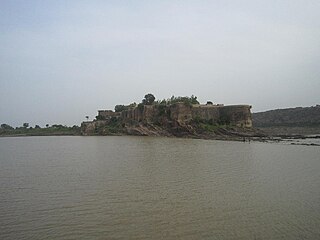
The Capture of Gagron in 1444 was a military campaign led by Mahmud Khalji of the Malwa Sultanate against the Khichi Chauhan Rajputs. The conflict resulted in the defeat of the Chauhan Rajputs and the forces of Mewar. Dahir, the commander serving Rana Kumbha, was among those defeated. The Gagron fort was successfully besieged, leading to the death of its ruler, Palhan Singh.

The Mewar- Malwa conflict was a series of wars between the Kingdom of Mewar and the Islamic Sultanate of Malwa. The conflict erupted due to mutual territorial expansion triggered by both sides on each other. The war was fought in what is now known as the Indian states of Rajasthan and Madhya Pradesh. The Rana branch of the Guhilas, following their successful recovery of the Rajput stronghold of Chittorgarh and the entire region of Mewar alongside Rajputana after the Battle of Singoli, embarked on an ambitious expansion at the cost of their neighboring kingdoms. On the other side, with the invasion of Timur, the Lame Delhi Sultanate grew weak with its multiple subahs gaining independence which included Malwa, adjacent to Mewar.
The Conquest of Ajmer was a military expedition launched by the Sultan Mahmud Khalji of Malwa aimed to conquer and subdue the region of Mewar, which was under the control of the Mewar kingdom.This military expedition was undertaken against Mewar with the intention of seeking revenge from Rana Kumbha of Mewar. It was a major military conquest carried out during the reign of Mahmud Khalji with the goal of expanding territorial control. Although Mahmud was victories in this campaign, he was not able to hold Ajmer for a longer period of time. As it was later reconquered by Rana Kumbha.

The Conquest of Hadoti was a significant military expedition led by Sultan Mahmud Khalji of Malwa against Hadoti. The primary objective of this campaign was to capture Bundi, Kota and Jhalawar, which were under the command of Bairisal, a subordinate of Rana Kumbha. Mahmud Khalji marched towards Hadoti in the year 1457-1458 A.D. to achieve this goal.


